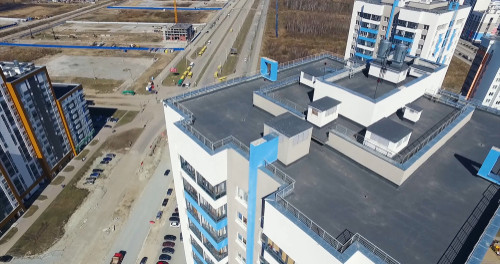Popular Methods of Waterproofing Buildings and What You Should Avoid

It is essential to waterproof buildings in order to keep the interior from being infiltrated with water from the exterior portion of the wall or roof. Although it might be good to have a way for ventilation, sealing the building environment is a more desirable option to keep the elements out and to conserve energy.
As soon as the building envelop is properly sealed, it will provide waterproofing to protect it from flash floods and rainstorms. For this reason, you will be able to see that your utility bills has dropped since your heat or air-conditioned air is not leaking out via seams and cracks within the structure.
Waterproofing Methods For Buildings
- Cementitious Waterproofing Method
This process is considered the easiest way to apply waterproofing in construction. Moreover, the materials needed for this method is easy to acquire from suppliers of masonry products. They are also easy to mix and apply.
Toilets and other areas inside the facility that often get wet would require waterproofing in which this particular method would easily fit. However, they are not exposed to weathering and sunlight.
- Liquid Waterproofing Membrane Method
In comparison to cementitious waterproofing, this method focuses on the liquid membrane of the facility. Liquid membrane is a thin membrane that consists of a primer coat and a couple of coats or top coats applicable with a trowel, roller, or spray.
At the same time, it has more flexibility compared to the previous method. The liquid will then cure and form into a rubbery coating on the wall. However, waterproofing durability would depend on the polymer type that has been used to manufacture it.
- Bituminous Coating Waterproofing Procedure
Another waterproofing and flexible protective coating type with flexibility and protection influenced by polymer grade and reinforced fiber is called bituminous coating. This is also known by the term asphalt coating. This is a popular waterproofing and coating agent or surfaces like concrete foundations.
- Bituminous Membrane Waterproofing Method
When it comes to low-sloped roofs, another popular method is the bituminous membrane waterproofing. Basically, it has a self-adhesive membrane and torch on membrane unlike any other waterproofing methods.
It is a type of waterproofing composed of asphalt, filler, and polymers. This type of waterproofing can also be improved in terms of its adhesive characteristics by adding certain oils and resins.
- Polyurethane Liquid Membrane Waterproofing Method
This method of waterproofing can be used on flat roof areas and those exposed to weathering. Although this option can be expensive, it has higher flexibility. It is also very sensitive to moisture content.
Without regard for the moisture content of the concrete slab, it will be prone to peeling or de-bonding of the membranes.
Steps In Making Sure Interior Is Watertight And Environmentally Sound
- Understand the water sources that might be encountered
- Design the systems that can prevent leakages from these sources
- Finalize the design by detailing individual envelop component properly into the adjacent components.
Conditions That Would Likely Cause Leakage
- The presence of moisture or water
- Water moved along by force, such as wind, gravity, or capillary action for low-grade components
- A breach in the envelop that would facilitate the entry of water into protected spaces
Waterproofing is a method that would make an item resistant to water damage. Thus, you need to select the best option to keep buildings impervious to internal and external factors and maintain its durability.
WICR Waterproofing & Decking is Southern California’s premiere waterproofing and decking specialist covering Los Angeles, Orange County, San Diego, Riverside, and San Bernardino counties. We are trained by all the major manufacturers of waterproofing systems, so that we can install or repair any waterproofing project. Please visit us at www.WICRWaterproofing.com
